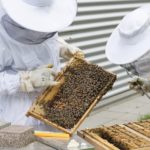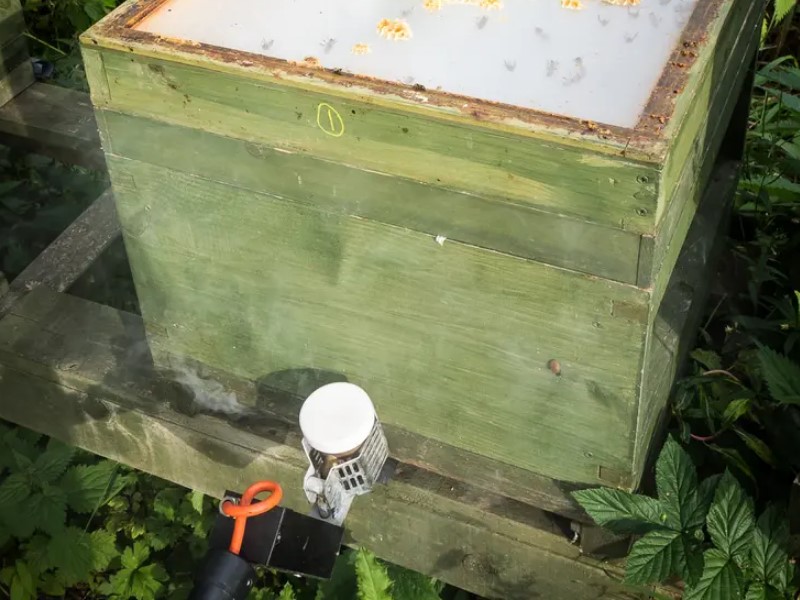
Oxalic Acid Gas Vaporizer Shopping Guide
The best oxalic acid gas vaporizer can help you get rid of all unwanted tenants in your beehive once and for all to ensure that your precious honeybee colony doesn’t crumble and fall apart. To make things even better, these vaporizers can also ward off a hazardous apiary fire, making it an indispensable tool for any beekeeper.
But mind you, not all oxalic acid vaporizers are made equal. There are a few things you have to know and remember to help you find the ideal one for your hive.
The following should be your top considerations when shopping for an oxalic acid vaporizer:
Table of Contents
Safety and Comfort
As far as features for safety and comfort are concerned, there are a few specifics you need to check and look for:
Crocodile Clips
The crocodile clips are often made of copper since the material is known to be a great conductor of electricity. Having said that, see to it that the crocodile clips have the correct insulation. The last thing you want is to end up vaporizing not the oxalic acid but yourself.
Entrance Guards
It’s critical to seal up a hive to ensure that all the vapor will remain within the beehive instead of getting blown away. No form of treatment will work well if you fail to seal off the beehive properly.
The crystals melt and then sublime into tinier crystals that disperse inside the hive that covers the bees and the interior of the hive. All the rest of the openings and entrances, including the smallest cracks, should be taped shut or closed off so that the fumes will not escape, resulting in reduced efficiency of the treatment.
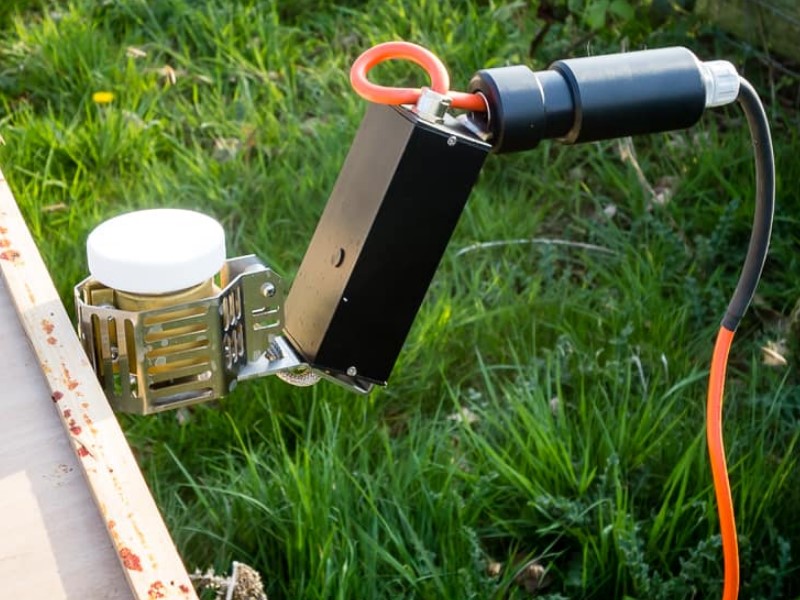
This is a cool feature that allows you to control the distance that you want the oxalic acid gas vaporizer to go into the hive. This can also be tightened to prevent it from moving around.
Handle
The vaporizer’s handle is yet another part that should be comfortable and must have proper insulation at the same time. The most popular choice of material for the handle is wood since it is not a heat conductor.
Rubber is also a great option although one issue about this material is that it tends to catch mold fast and can also get sticky when wet.
Weight
It can be a somewhat tricky thing to balance a vaporizer’s weight. However, you don’t like to use a bulky tool that you need to carry all around the apiary. On the other hand, an extremely lightweight vaporizer might indicate that poor-quality materials were used. The main point here is that you should choose one with a comfortable weight, even more so if you happen to have several hives.
Length of Vaporizer and Cord
It’s common to keep the beehives at a distance away from the house or the shed. This is why a long cord is perfect to easily plug it into a power source. Twelve feet is already more than enough cord to stretch from the battery of your car or lawnmower.
The length of the wand itself is also another important consideration. You’d want to opt for a somewhat long rod. It’s because it keeps you at a safe distance away from the oxalic acid vapor if you have to hold it and there are a few cracks.
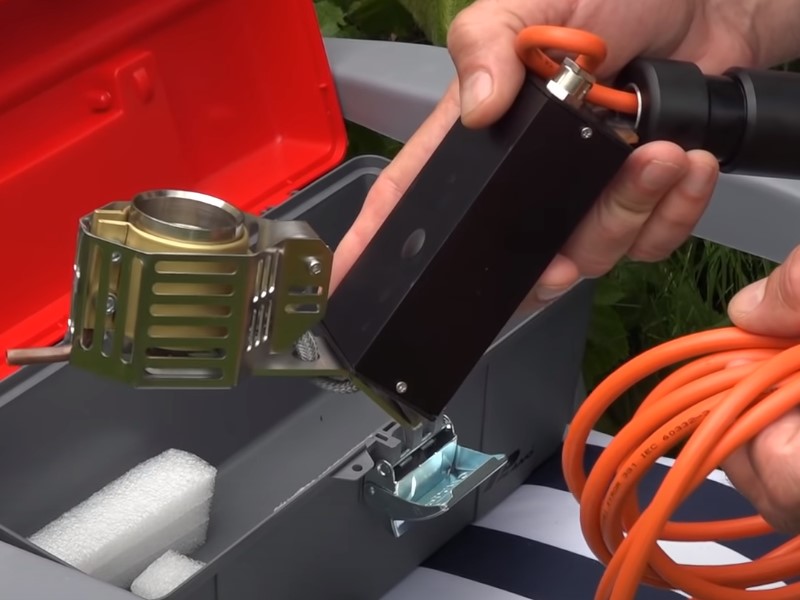
Keep in mind that oxalic acid vapor isn’t harmful to the bees themselves but be quite toxic for you. See to it that you put on your protective gear while going about with treatments using your oxalic acid gas vaporizer.
A longer cord indicates that you have better control as to how far you’d want to put your vaporizer inside the beehive. The wand should be positioned closest to the bees to ensure that you will get all the pesky Varroa mites right on their abdomens. They would be typically located in the center ¾ of the beehive so the combs should also be treated evenly.
Heating Element
One of the most important parts of an oxalic acid gas vaporizer is none other than the heating element. You must find the correct combination of temperature and material for effective oxalic acid vaporization.
Heating Time and Material
You have two options when it comes to the oxalic acid pan’s material. Many vaporizers use either stainless steel or aluminum. These are both excellent heat conductors although stainless steel doesn’t perform as great as aluminum.
The thermal conductivity of pure aluminum is approximately 235 watts per Kelvin per meter. Meanwhile, the conductivity of stainless steel is much lower at only around 15 watts per Kelvin per meter.
The aluminum material can also dissipate heat more than 15 times faster compared to stainless steel. This is the reason why aluminum-made oxalic acid gas vaporizers are often preferred.
Your choice of material also goes together with the heating time. Unlike stainless steel, aluminum tends to heat up faster although copper pans usually heat up a bit quicker than aluminum. Some vaporizers feature a glow plug responsible for heating a metal plate. Just remember though, that this kind of indirect method of heating often takes longer.
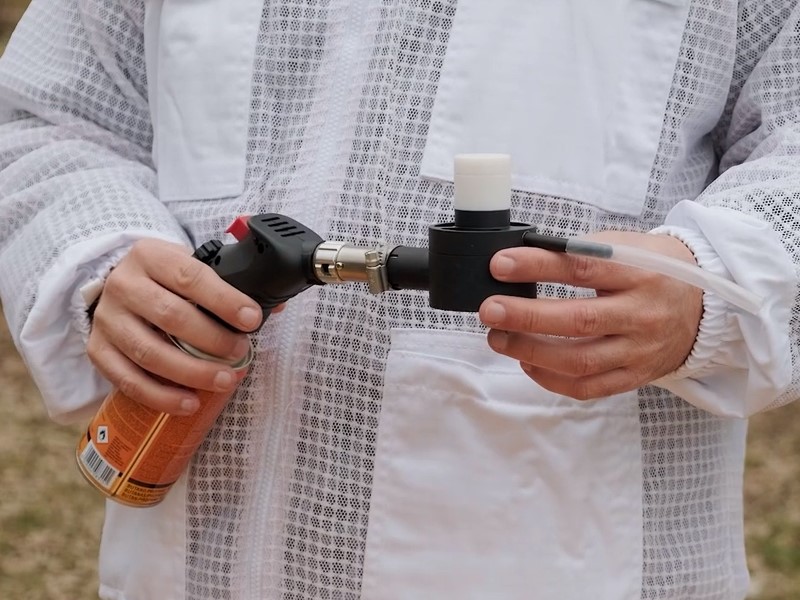
The heating element’s temperature drops if you add oxalic acid. More time is required for heat to return to the recommended temperature for the crystals to be vaporized.
As far as quality is concerned, CNC-machined pans are much better compared to the simple pans that underwent melting and molding. The CNC machining process involves cutting a pattern specified by the computer out of large and compact blocks of aluminum.
Temperature Range
The pan of an oxalic acid gas vaporizer should get extremely hot. The oxalic acid material starts vaporizing at approximately 157°C. This means that the element for heating should be way hotter. A higher temperature for heating makes up for the temperature drop.
Treatment Time
The treatment time refers to the length of time the crystals vaporize. A wand-type oxalic acid gas vaporizer works its magic in around 2 to 3 minutes. Ensure that most of the bees are inside the hive. The last thing you want is to spend more time attracting the bees just so you can treat them.
Be sure to refer to this guide the next time you go shopping for an oxalic acid gas vaporizer.
